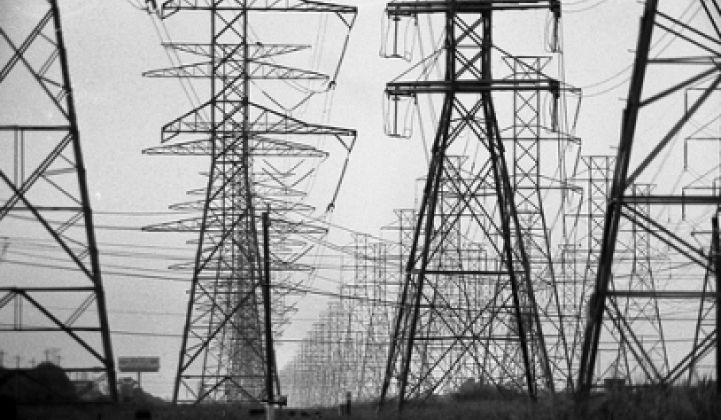The Department of Energy has picked eight projects on the cutting edge of electricity grid technology to get $47 million in grants – the first funding from a $3.9 billion pool of stimulus package grants for smart grid deployments.
But with all eight already promised the grants the DOE announced Monday, it's not clear what light the news sheds on how the department will pick and choose technologies when it comes to spending the rest of that money.
Still, they're interesting projects covering a broad range of technologies, from superconducting transmission lines and integrating renewable energy into the grid to new forms of demand response and so-called "microgrid" systems.
Out of the $3.9 billion in smart grid grants the DOE announced last month, $615 million has been set aside for such demonstration projects (see DOE Issues Rules for $3.9B in Smart Grid Stimulus Grants).
The rest of the money, about $3.4 billion, is meant for projects on a commercial scale, and is already the target of multiple utilities, though not all have announced their intentions.
Among those that have, Texas utility Oncor has said it wants $317 million, Baltimore Gas & Electric wants $200 million, Maryland-based Pepco Holdings wants $254 million and Arizona utility Salt River Project has said it is seeking an undisclosed amount (see Oncor Makes $317M Smart Grid Pitch and news reports here and here).
Most of the announced applications are seeking funding for extending utilities' ongoing smart meter deployments. Electric and gas meters that can send and receive data and control commands from utilities are being deployed by the tens of millions around the world, about 8.3 million in the United States as of May, according to a recent report from Parks Associates (see 8.3M Smart Meters and Counting in U.S.).
Unlike those projects, the demonstration grants are meant to foster new technologies and prepare them for more widespread adoption. They were also expected to be coming out no earlier than November, so Monday's announcement was a "bit of a surprise," according to Ben Schuman, analyst with Pacific Crest Securities.
The eight projects getting a piece of the $47 million announced Monday already raked in $17 million from DOE last year, so maybe that existing relationship speeded the process somewhat, he said. Schuman said he still expects it will take until late 2009 or early 2010 for the majority of the research grants to be awarded.
As for the technologies being investigated by the projects announced Monday, three involve using superconducting cables as fault current limiters – that is, systems to shut down power transmission under the kinds of excessive currents that can cause blackouts. (see Superconductors for the Grid).
London-based Zenergy Power (AIM: ZEN) will receive $8.1 million to demonstrate its fault current limiters in California, and American Superconductor Corp. (NSDQ: AMSC) will get $4.8 million to develop advanced superconductor fault current limiter technology.
Devens, Mass.-based American Superconductor also will get $7.6 million for another project building on its previous work with New York's Long Island Power Authority on a voltage level superconductor cable system.
Then there are several projects testing the integration of smart grid, energy storage and distributed generation sources at a neighborhood level – so-called "microgrid" or "virtual power plant" projects.
Fort Collins, Colo. will get $4.8 million for its FortZED project, which stands for Fort Collins Zero Energy District. The idea is to combine all those technologies to achieve a 15-percent reduction of demand at neighborhood distribution feeders, thus reducing the strain across the system (see Green Light post).
The Illinois Institute of Technology is getting $5.4 million for a similar project at its Chicago campus, which it calls a "perfect power prototype." And the University of Hawaii at Manoa-Hawaii Natural Energy Institute is getting $5.5 million to integrate wind power and other renewable energy at the distribution grid level.
Then there's demand response. Consolidated Edison Co. of New York will get $5.6 million project looking at new ways to connect to its customers with technologies to turn down their power usage during peak demand times – often hot summer afternoons when everyone turns on his or her air conditioner at once.
And the University of Nevada-Las Vegas will receive $5.7 million to develop a "community of green homes" in the southwestern U.S., one with distributed generation, energy conservation and a "detailed energy accounting."
Photo courtesy http://www.flickr.com/photos/sjalex/ / CC BY-NC-SA 2.0



